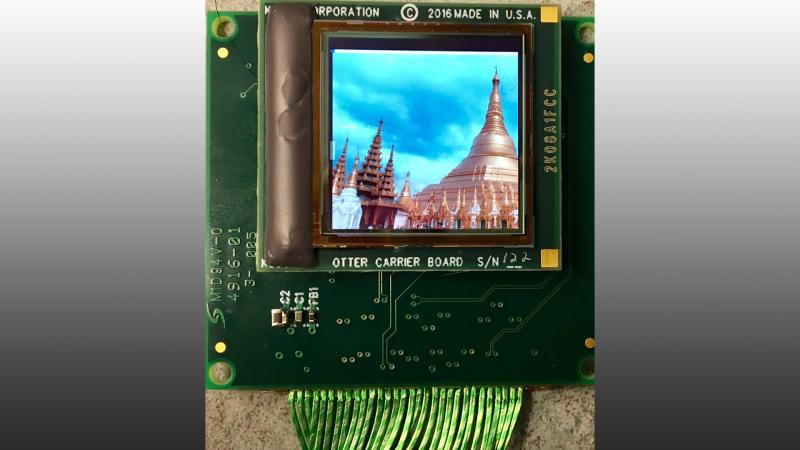The Future is Tiny: Microdisplay Market Poised for Explosive Growth
The microdisplay market is undergoing a period of rapid expansion, fueled by the increasing demand for advanced displays across various sectors. The market is poised to reach $3 billion by 2029, growing at a compound annual growth rate (CAGR) of 18.2% during the forecast period. This remarkable growth trajectory can be attributed to the adoption of these displays in a wide range of applications, including augmented reality (AR) and virtual reality (VR) headsets, wearables, and automotive dashboards.
Understanding the Microdisplay Market
Microdisplays, as the name suggests, are miniature displays that typically measure less than one inch diagonally. These displays are characterized by their high resolution, high brightness, and low power consumption. They are also highly versatile and can be integrated into a wide range of devices.
Key Market Drivers
The growth of the microdisplay market is driven by several factors, including:
-
The Rise of AR/VR: The increasing adoption of AR and VR technologies is driving the demand for microdisplays. These displays are essential for creating immersive experiences, providing users with realistic and engaging virtual environments. The microdisplay market is expected to benefit from this trend, with the AR/VR segment expected to witness significant growth in the coming years. The report indicates that the SVGA+ Rev3 OLED-XL microdisplay from eMagin Corporation is specifically designed for near-eye personal viewer applications, highlighting the growing importance of microdisplays in this space.
-
Wearable Devices: Wearable devices, such as smartwatches and fitness trackers, are becoming increasingly popular. These devices often feature small displays, making microdisplays an ideal choice. The rising demand for wearables is expected to contribute to the growth of the microdisplay market.
-
Automotive Industry: The automotive industry is also witnessing a surge in the demand for microdisplays. These displays are being used in dashboards, heads-up displays (HUDs), and rear-view cameras. As the automotive industry continues to adopt advanced technologies, the demand for microdisplays in this sector is expected to grow.
OLED Technology Taking Center Stage
The OLED segment of the microdisplay market is poised for significant growth. The adoption of OLED technology is driven by several factors, including its ability to deliver superior image quality, fast response times, and enhanced color range.
Key Market Segments
The microdisplay market is segmented based on various factors, including:
- Product: NTE devices, HUDs, and projectors
- Technology: OLED, LCoS, and MicroLED
- Resolution: Higher than FHD, FHD, and lower than FHD
- Vertical: Consumer, industrial and enterprise, automotive, retail & hospitality, and medical
Regional Landscape
The Asia Pacific region is currently the largest market for microdisplays. This can be attributed to the presence of several leading manufacturers of microdisplays in the region, along with the high demand for consumer electronics and automotive products in this region. The report states that Asia Pacific is likely to continue to have the highest demand for microdisplays for use in NTE devices, driven by the presence of prominent EVF vendors in Japan.
North America is expected to witness significant growth in the microdisplay market in the coming years, driven by the availability of advanced technologies such as AR/VR head-mounted displays (HMD). The use of microdisplays in AR/VR applications across various industries, including consumer, aerospace and defense, industrial, and healthcare, is expected to fuel market growth in the region.
Competitive Landscape
The microdisplay market is characterized by the presence of several prominent players, including:
- Seiko Epson Corporation (Japan)
- SeeYA Technology (China)
- Sony Group Corporation (Japan)
- Kopin Corporation (US)
- Himax Technologies, Inc. (Taiwan)
- HOLOEYE Photonics AG (Germany)
These companies are constantly innovating and developing new products to meet the growing demand for microdisplays. The competitive landscape is expected to remain intense in the coming years, with companies striving to gain a larger market share.
The Future of Microdisplays
The microdisplay market is expected to continue its growth trajectory in the coming years, driven by the increasing adoption of advanced technologies such as AR/VR and wearables. The development of new technologies, such as MicroLED, is expected to further enhance the capabilities of microdisplays, leading to the development of even more immersive and engaging user experiences. The future of microdisplays is bright, with the potential to revolutionize the way we interact with technology and the world around us.
Looking Ahead: A World of Tiny Wonders
The microdisplay market is a dynamic and evolving space, with advancements in technology constantly pushing the boundaries of what is possible. As the demand for advanced displays continues to grow, the microdisplay market is poised to play an increasingly important role in shaping the future of technology. The small size and versatility of microdisplays will continue to make them an essential component in a wide range of devices, from AR/VR headsets to automotive dashboards. The future of microdisplays is bright, filled with the promise of more immersive experiences and innovative applications that will transform our world.

















